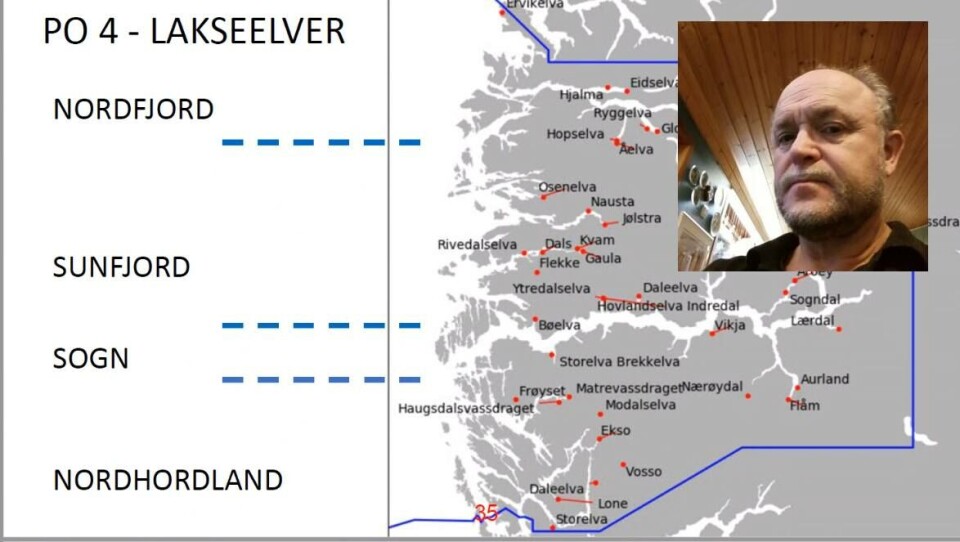
‘Traffic light’ experts 'have got smolt migration wrong'
The expert group that determines whether production should rise or fall in Norway’s 13 salmon farming areas missed significant factors when they imposed a 6% cut on production area 4 (PO4), a court has heard.
“The traffic light system that came in January 2020 was incorrectly assessed. The monitoring behind it is deficient, the data quality is weak and there is a lack of representative data,” expert witness Per-Otto Hjertenes said.
The 25 salmonid farming companies in PO4 are contesting the state’s basis for the red-light designation given to the area under Norway’s “traffic light” system, which assigns each area a green, yellow and red traffic light depending on the perceived risk of sea lice-induced mortality among wild salmon. Capacity is adjusted by 6% upwards (green) or down (red). In yellow areas, capacity is frozen.
The companies contesting the designation include Mowi and Scottish Sea Farms co-owner Lerøy.
Better data
Hjertenes is a consultant and qualified fisheries biologist whose work includes audits for certification bodies such as Global G.A.P and the Aquaculture Stewardship Council.
He has also been central to the so-called KLAFF project, where fish farmers have funded research to provide better data on when and how wild salmon smolts migrate to sea. The project, which has had a budget of NOK 10 million, began in 2016 and involves research carried out by the Norwegian University of Life Sciences (NMBU), Nord University and the University of Trondheim (NTNU).
New knowledge
He told Sogn og Fjordane District Court that in his view the monitoring of smolt migration, which has stretched over a period of ten years, had not taken new knowledge into account.
“For example, the time of emigration used in the models is far too late in relation to data from actual emigration we have obtained from experiments where emigrating smolts are marked with telemetry markers and mapped with listening buoys.”
He believed that the Institute of Marine Research (IMR) had used old data and wrongly defined the median emigration in PO4 to May 21-22.
Two-week difference
“This is more in line with rivers further north, for example in Trøndelag,” said Hjertenes.
“The fish in PO4 go out with a median date closer to May 8, and most will be completely in the outer parts (of the fjord system) before May 20. In addition, the expert committee has assumed that the fish migrate in equal numbers over a 40-day period. We believe that the emigrations take place over 30 days, with two concentrated periods of a total of one week. The models are therefore very square, theoretical and do not fit well with what we see in nature.”
He also referred to the telemetry experiments which showed that the wild smolts migrate in a freshwater layer at the top of the fjord system for large parts of their journey, and thus avoid being infected by lice.
“In other words, a fish will not encounter lice larvae in the Nordfjord until it has passed the middle of the fjord,” he said.
Lice monitoring
Hjertenes further claimed that the expert committee allowed 28-30 days for the fish to reach the sea.
“I have not received a good explanation for that,” said Hjertenes.
The consultant also told the court that NALO (the national salmon lice monitoring programme) carries out a lot of its monitoring in June, long after the smolts have left the outer fjord.
“Monitoring data has its weight from periods when there won’t not be many smolts in the fjords. This way of doing it has been stable since 2011 and has not changed despite our input that the fish migrate much earlier,” he said.
He added that the same complaints apply to the Sognefjord.
Erroneous approaches
The consequence of these alleged erroneous approaches is that modelling gives the wild smolts higher levels of lice infestation than they have in reality.
“The smolt that migrates out is expected to encounter fewer lice larvae if you use observation data than if you say that it goes out 14 days later. But they (the state’s scientists) do not want to emphasise this. The problem for them is that if they change at the median time of emigration, a lot of the data they have cannot be used,” he said.
Another complaint Hjertenes had was that the expert group uses data from lice counts on sea trout.
“Results from sea trout are not transferable to salmon smolt. This was thought before, but now it has been concluded that it can’t be done,” he said.
“The behavioural patterns of the two species are very different. The sea trout stays mostly along land, it is stationary and grazing. It can also get rid of lice by going up in fresh water. The salmon smolt, on the other hand, travels purposefully towards the sea. Nevertheless, figures from sea trout are emphasised in the same way as the other monitoring when the traffic light is set.”
Sentinel cages
Hjertenes also questioned the use of sentinel cages as a measure of lice impact on wild fish.
“Smolts are caged for periods of 14 days before being picked up and lice are counted. The cages are normally set out late, and several animal welfare aspects make the method unsafe. The fish is put straight into a cage after smoltification, it does not get food, and it is not in good condition during the experiment.”
He also believed that it was important to have the traffic light assessments assessed by an independent party.
“The ministry (of trade, industry and fisheries) has answered that they have not had time for that. Then they have said that this should be prioritised, but it has not yet happened,” he said.























































